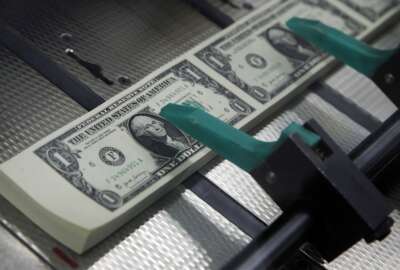
Got a best age to retire in mind? If not, maybe you should!
Whether you’re a lifer with Uncle Sam, or your current job is just training for a better gig in the private sector, odds are one of these days you will retire.
Whether you’re a lifer with Uncle Sam, or your current job is just training for a better gig in the private sector, odds are one of these days you will retire. As in walk out under your own steam. Hopefully at an age that will give you plenty of time, and definitely enough lifetime income, to insure the golden years aren’t spent clipping coupons because you will need them to eat! That’s a fear of many working Americans. But it shouldn’t be for federal or postal workers, especially if they understand their benefits package and maximize it.
It seems that whatever the job — federal park range, postal supervisor, IRS auditor, selling shoes at local mall or running your own company — many people come up with a magic age when they can, and should, retire. For some it may be the earliest possible moment. Especially if the job is super stressful or the boss is horrible. Others seek out the Goldilocks moment: The sweet spot age which would give them plenty of time — maybe decades — to enjoy retirement without fear that their income would run low. Or out.
Many private sector workers wonder, and some really question, not when they can retire but if they can ever retire? More than 60 million work for companies that do not provide any form of company-pension benefits. Their fears are not unfounded. Yet many still have a magic date — the perfect age — when they think they can retire. If they can.
MSNBC recently reported on a study, by Natixis Investment Managers of what private sector workers think is the best age for them to retiree. Even here there is a generation gap. For Generation Y (ages 25 to 40) most planned to retire at 59. That jumped up to an age 60 for Gen X (ages 41 to 55) folks and then jumped to a more conservative age 68 pull date for Baby Boomers ages 57-75.
Studies have shown that many younger private sector employees either don’t believe Social Security will be there for them, or that it will be watered-down to provide little more than pocket change. Many have company-backed 401k plans, but few have a traditional employer-sponsored retirement plan. Getting it right, picking the best age and time, is critical for federal or postal workers because of their diverse benefit package, which is time sensitive. Generally speaking, the longer they work, the more they will get. But for many that is not the only consideration. For the majority of working feds, the Federal Employees Retirement System is the driving force. It coordinates with the Thrift Savings Plan and Social Security legs of the system. And while it provides inflation protection for retirees, the diet-COLA component limits those annual adjustments in times of high inflation. Over time that could cut into the monthly benefits buying power. But there is another thing to consider. The dull-sounding but super-important MRA +10 component. It translates from governmentese to Minimum Retirement Age plus 10 years. And understanding it can boost your annuity. A lot. And nobody knows how to weave all these things together better than Tammy Flanagan. She’s a long-time, now retired benefits specialist who, in retirement, is now counseling individual feds before they leave government. Tammy will be my guest today on our Your Turn radio show (www.federalnewsnetwork.com or 1500 AM in the Baltimore-DC area).
Copyright © 2025 Federal News Network. All rights reserved. This website is not intended for users located within the European Economic Area.
Mike Causey is senior correspondent for Federal News Network and writes his daily Federal Report column on federal employees’ pay, benefits and retirement.
Follow @mcauseyWFED
Related Stories




